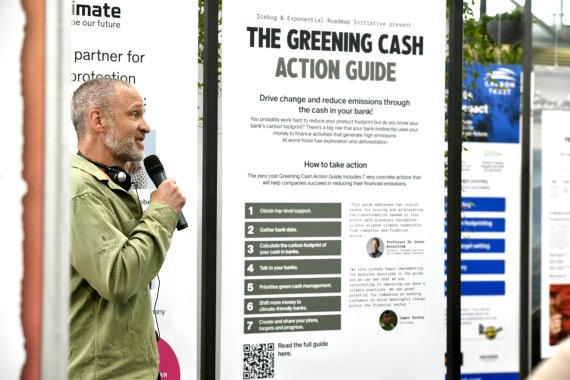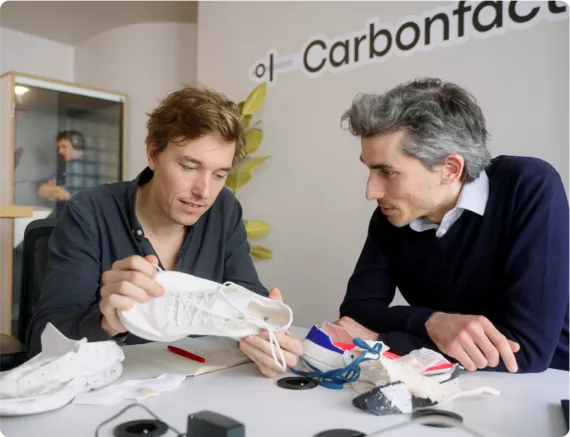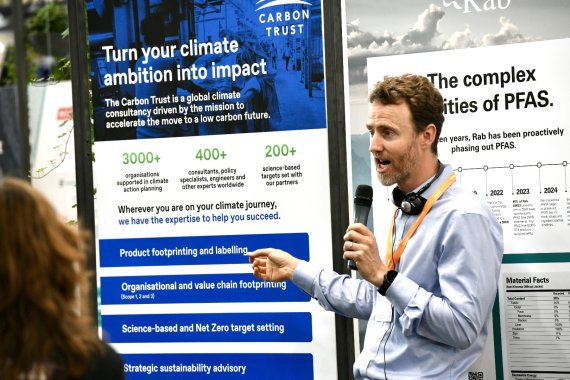At COP29 in Baku, Azerbaijan, significant strides were made in international climate policy. Key achievements included the establishment of robust standards for a centralized carbon market under the UN framework (Article 6.4 of the Paris Agreement (2)), aimed at improving transparency and integrity in carbon credit trading, and the launch of the COP29 Hydrogen Declaration, which commits to expanding renewable and low-carbon hydrogen production as part of the global energy transition. However, significant challenges persisted, particularly in climate finance. Developing nations voiced frustration over inadequate commitments from developed countries, both in scaling up the New Collective Quantified Goal (NCQG) and ensuring sufficient contributions to the Loss and Damage Fund to address climate-induced catastrophes. The conference also drew criticism for the notably low participation of industrialized nations, which weakened efforts to advance global cooperation and ambition.
This underscores the pressing need for stronger collaboration. Our industry must embrace innovation to accelerate progress and align with the 1.5°C target, advancing decisively and consistently to secure a sustainable future for everyone (3,4,5,6,7,8).
One of the key challenges in achieving meaningful progress is the ability to measure and track impact. Tools that assess carbon footprints, supply chain sustainability, and resource efficiency are vital to ensuring accountability and driving improvement. These technologies empower everyone—consumers, brands, and service providers alike—to make informed decisions and contribute to a coordinated climate movement. By understanding and measuring impact, individuals and organizations can align their actions with global climate goals (9).
In the evolving landscape of climate action, organizations that proactively integrate sustainability into their core strategies are poised to lead. The Exponential Roadmap Initiative emphasizes that businesses adopting circular models, reducing emissions, and investing in green technologies will not only mitigate environmental risks but also unlock new economic opportunities. Conversely, those neglecting these imperatives may face regulatory challenges, reputational damage, and financial setbacks. As the global economy shifts towards sustainability, the distinction between future winners and losers will hinge on the commitment to and execution of robust climate strategies (10).
The transition to a sustainable future requires everyone’s participation. Consumers drive demand for sustainable products and services, brands set standards for innovation and responsibility, and service providers deliver practical solutions that make sustainability both affordable and economically beneficial. Together, we can form a powerful, coordinated movement that can turn ambition into action. Collaboration, transparency, and shared responsibility are essential to delivering systemic change.
The task ahead is daunting, but actionable solutions already exist. At ISPO 2024, the Sustainability Hub will showcase nine transformative approaches designed to empower individuals, businesses, and policymakers to take meaningful steps forward. For anyone ready to act, these solutions offer tools, insights, and pathways to make a real difference.
You try to run a sustainable business - but what does your bank do with your money? “Financed emissions” are often a blind spot in climate action. Icebug and the Exponential Roadmap Initiative present the Greening Cash Action Guide—a practical tool to reduce financed emissions and drive sustainability through your financial supply chain. Like material supply chains, financial systems also generate emissions, but companies can push banks to adopt greener practices. Icebug has already seen results, helping their bank improve climate policies. Join the movement and learn how to make your money work for the world. Visit ISPO to explore the guide and start driving real change today.

Collaborating with the sports industry and communities, myclimate drives impactful change through advisory services, education, and climate action projects. Offering high-quality mitigation and removal projects, myclimate supports the UN Sustainable Development Goals with long-lasting global impact. Its consulting services help businesses meet EU requirements for sustainability, develop climate strategies, apply for the SBTi, and adopt IT solutions for e-commerce, CCFs, PCFs, and LCAs. Educational programs empower schools and workplaces to promote expertise and action for effective climate protection.

The Carbonfact platform is specifically designed for the apparel and footwear industries, enabling companies to measure, report, and reduce their environmental impact. It provides impact assessment tools for products, including metrics such as CO₂ emissions, water consumption, and land use. The platform also supports compliance with regulations in the EU and U.S., like the CSRD, DPP, and NY Fashion Act, saving significant time in reporting emissions. Additionally, it automates carbon accounting following the GHG Protocol, with a strong focus on high-accuracy Scope 3 measurements. For eco-design, users can model changes within the supply chain at both the product and catalog levels, running what-if scenarios to help reduce their overall environmental footprint.

The Carbon Trust, a global climate consultancy, partners with businesses like Amer Sports to turn climate ambitions into measurable impact and drive the transition to a decarbonized future. By addressing challenges such as carbon pricing, evolving customer expectations, and varying levels of sustainability maturity within corporate groups, the Carbon Trust develops clear, collaborative plans that align diverse brands with Net Zero goals. With decades of experience, pioneering collaborations, and contributions to global standards like the GHG Protocol, the Carbon Trust empowers businesses to reduce emissions, mitigate risks, and seize opportunities for long-term sustainability.

The International Down and Feather Bureau (IDFB) commissioned an independent Life Cycle Assessment (LCA) by Long Trail Sustainability to compare the environmental impact of down and synthetic fill. Analyzing five key categories—human health, ecosystems, resources, energy demand, and climate change—the study revealed that down has an 85% to 97% lower impact than polyester across all areas. For climate change alone, down's impact is 94% lower. Choosing down not only helps with effective climate action but also provides exceptional warmth without added weight. Ethically sourced and fully reusable or compostable, down stands out as the most sustainable and eco-friendly filling material available.

The Gore-Tex brand is committed to reducing its carbon footprint. As extreme weather events intensify, the company is working closely with suppliers and customers to jointly achieve climate targets. Their approach ensures that sustainability is integrated throughout the value chain. Their Carbon Reduction Roadmap emphasizes transitioning to renewable energy, improving materials with recycled options, and innovative technologies. This also includes exploring new designs and business models with a focus on durability. Gore-Tex is also working side by side with their suppliers to support phasing out fossil fuels, electrification of manufacturing processes, and providing access to renewable electricity.

Atomic emphasizes that every ski has a story—and a carbon footprint. Producing the Atomic Backland 102 skis generates 17.43 kg of CO₂, which is already comparatively low. With a science-based approach and detailed lifecycle analyses, Atomic aims to reduce this figure actively even further through innovative designs that minimize environmental impact without compromising performance. At the same time, Atomic leverages renewable energy in local manufacturing and reduces the use of fossil fuels in production. Programs for product take-back and repair extend the lifespan of their products and help to eliminate waste.

Sicomin is a leader in the development of bio-based epoxy adhesives, essential for assembling materials used in skis, snowboards, and kites. The innovative GreenPoxy range provides ski and snowboard manufacturers with environmentally friendlier alternatives, using 35% to 52% of raw materials derived from the valorization of oleochemical waste. Lifecycle analyses reveal that GreenPoxy adhesives reduce CO₂ emissions by an average of 40% compared to traditional petrochemical-based adhesives. Trusted by renowned brands like ZAG, Movement, Nidecker, Burton, and Salomon, GreenPoxy combines sustainability with exceptional performance, setting a new standard for eco-conscious manufacturing.

The revolution of changing the dyeing method from Piece Dye to Dope Dye will reduce a massive amount of water, as well as decrease chemical use and save energy during the colouring process. On top of that, it will significantly reduce CO₂ emissions. FixDye sets a new standard with its production of 100 % recycled polyester dope-dyed yarn, starting with black—the most widely used color in the textile industry. By fixing the filament yarn color recipe through Reo-Eco's vertical in-house production process, with a capacity of 250,000 tons, FixDye is driving the industry’s shift from traditional piece dyeing to dope dyeing, fostering smart partnerships with brands and supply chains.

 Sustainability4 tips to Green Deal-compliant packaging
Sustainability4 tips to Green Deal-compliant packaging
- Awards
- Mountain sports
- Bike
- Fitness
- Health
- ISPO Munich
- Running
- Brands
- Sustainability
- Olympia
- OutDoor
- Promotion
- Sports Business
- Textrends
- Triathlon
- Water sports
- Winter sports
- eSports
- SportsTech
- OutDoor by ISPO
- Heroes
- Transformation
- Sport Fashion
- Urban Culture
- Challenges of a CEO
- Trade fairs
- Sports
- Find the Balance
- Product reviews
- Newsletter Exclusive Area
- Magazine




